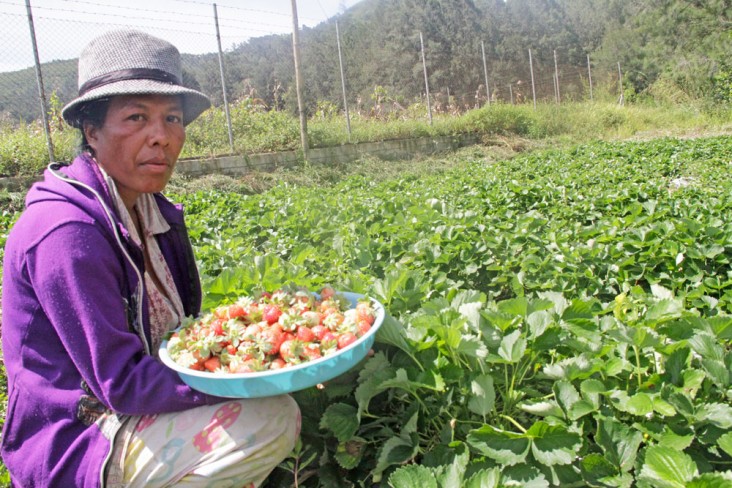Speeches Shim
|
Purpose: The Avansa Agrikultura Project is a key component of USAID’s strategy to strengthen institutional and human capacity in Timor-Leste.
|
Location: Municipalities of Aileu, Ainaro, Bobonaro, Dili, Liquica and Ermera |
|
Key Counterparts: Ministries of Agriculture and Fisheries; Tourism, Commerce and Industry; and Health. Private Sector Organizations |
Duration: April 2015 — September 2020 |
|
Contract: $19.2 million |
|
|
Partner Contact: Cardno Emerging Markets USA Ltd. Paul Mason Chief of Party Email: info@avansaag.com |
USAID Contact: David Howlett Agriculture Officer |
Summary
USAID’s Avansa Agrikultura Project is accelerating sustainable economic growth in the agriculture sector. At the end of the project, USAID anticipates more than 9,000 households will be earning higher incomes, increasing household savings and eating more nutritious foods. USAID has adopted lessons learned from previous projects working with farmers, buyers, and communities. The long-term sustainability will be ensured by strengthening the links between the private sector and local partners that deliver services to rural farmers.

Major Achievements:
- Average annual income for partner farming households rose nearly 18 percent in FY19 to $2,454 and have risen 944 percent since the project started in 2015.
- Project initiatives benefitted 8,695 households.
- Focusing on youth, the project has trained 6,591 young people in life skills including entrepreneurship, agricultural production, natural resource management, and nutrition.
- Moderate to severe hunger has fallen by 90 percent in target areas since the project started.
- A thriving input supply sector is developing, demonstrated by a nearly threefold increase in annual input supply sales from $200,000 to $770,293 since 2015.
- More than 32,000 farmers applied new technologies that are steadily improving productivity.
- The project introduced technologies that promote improved climate risk reduction and/or natural resource management on 3,376 hectares, thereby markedly improving farmers’ ability to manage water shortages and erosion.
- Women of reproductive age are consuming healthier food, with 83 percent now including five or more nutritious food groups in their diets.


Comment
Make a general inquiry or suggest an improvement.